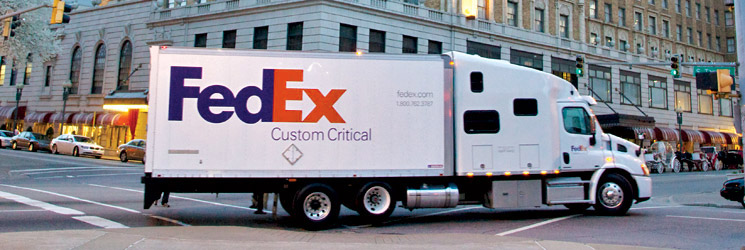Researchers from the University of Cardiff’s Business School are investigating how 3D printing manufacturing hubs could soon replace the multi-echelon transportation systems many of us are familiar with around the world.
A multi-echelon system is one that is based on outsourced manufacturing and relies heavily on layers of suppliers spread across multiple distribution centers. This is the kind of system that much of the world’s transportation structures are based on, and the Cardiff researchers believe 3D printing could be just the technology to shake things up.
Reader in Management Science at Cardiff Business School, Emrah Demir, and his colleagues Daniel Eyers, Senior Lecturer in Manufacturing Systems Management, and Yuan Huang, Lecturer in Operations Management, have presented an efficient mathematical model to investigate various scenarios of integrated 3D printing production with transportation planning, and the potential benefits this could yield for delivery firms battling to overcome challenging city logistics.
“Generally, production and transportation problems are solved separately,” they explained. “In this research, we tried to integrate both important parts of fulfilling customer orders and on-time deliveries, looking at transport and production on a daily and weekly basis. We proposed a simple but effective algorithm that can solve the problem of maintaining high 3D printing machine usage rates and effective van utilizations.
“In doing so, we provide an easily-reconfigurable scoreboard-based tool that is suitable for SME operations, and is capable of using non-financial drivers.”

Integrating 3D printing with transport logistics
In recent years, 3D printing has been increasingly integrated into transportation systems around the world to help simplify and improve areas of the transport sector, especially within city logistics. City logistics refers to urban freight distribution and the strategies to improve its efficiencies while mitigating congestion and other environmental impacts.
For instance, the US Navy has incorporated 3D printing into its operations, and in some cases aboard its military warships, to quickly produce spare parts and prototypes on-demand, demonstrating how a transport resource can also serve as a responsive manufacturing medium. Binder jet 3D printer OEM ExOne has been recently tasked with developing a portable 3D printing factory for the US Department of Defense (DoD), containing everything the armed forces may need for spare part production in the field, be that land, air, or sea.
Elsewhere, Amazon’s patent on 3D printing-equipped trucks has the potential to enable mobile manufacturing hubs for consumer products in the future. Filed in 2015, the patent describes the ability for 3D printing service providers to print customer orders on a mobile truck, and it was anticipated at the time that the company’s sights were set on a much broader business model within this area.
Meanwhile, global shipping and logistics provider UPS has also made investments in 3D printing, having fitted some of its stores with 3D printers to create an on-demand printing network for manufacturers across the US. Reportedly, UPS was seeking to “redefine spare parts logistics and contract logistics as we know it”, through drastically cutting down delivery times and transportation costs.
Other examples include fellow global logistics firm DHL’s trial of parcelcopter delivery using drones to supply medical products, parcel delivery brand DPD’s cooperation with robotics specialist Starship for last-mile deliveries, and Rolls-Royce’s circular economy model to reduce the burden of its jet engine maintenance, within which some 3D printed components are deployed, through a lifetime service program.

Improving healthcare distribution through 3D printing and city logistics
During their study, Demir, Eyers, and Huang investigated how integrating 3D printing manufacturing hubs with city logistics could be applied to the distribution of healthcare products to customers located within urban environments. In particular, they applied their mathematical model to the distribution of hearing aids in various scenarios where 3D printing production and transportation planning were combined.
“We know that there is a real need to consider the environment,” they said. “Many logistics companies have already started thinking about how to react to this. In our work, we show one possible complementary approach where local production and distribution for urgently required customized medical devices can be integrated. This is a very special case, but we believe it can be extended to other areas.”
The researchers based their investigation on real-world cases within the medical industry, and came to the conclusion that it was “perfectly reasonable” to establish these types of combined 3D printing logistics facilities, identifying many already-existing commercial bureaus equipped with the technical competence with which to do this successfully. The research for this paper was conducted prior to the Covid-19 pandemic, and the researchers believe the subsequent lockdowns and supply chain disruptions seen across the globe since then have further highlighted the potential advantages of more localized logistics solutions.
“There is a lot of appetite from logistics service providers to implement 3D printing,” they stated. “And our work shows obvious commercial opportunity. There are technical difficulties to overcome for some applications, but we foresee early adopters employing our proposition in the future.”
Looking at both the transport and production of 3D printed hearing aids on a daily and weekly basis, the researchers developed a novel mathematical optimization model that sought to improve the fulfillment of customer orders in tandem with ensuring on-time deliveries. The algorithm generated a solution that would simultaneously maintain high 3D printer usage rates and effective van utilizations. Using this, they then devised a scoreboard-based tool suitable for use by small and medium-sized operations to optimize their own production-delivery processes, which can be easily reconfigured dependent on the production scenario.
“What is needed, though, is the emphasis on setting up manufacturing facilities and bringing people and technologies together,” the researchers continued. “This is a real challenge and is something that is often overlooked when thinking about 3D printing. It is important to remember that it is more than technology. In this case, we look at both manufacturing technologies and transportation together by proposing analytical decision support.”

Future potential for 3D printing’s role in logistics
While Demir and his colleagues focused on the optimization of production and delivery processes for 3D printed hearing aids in this study, they believe the potential for integrating 3D printing manufacturing hubs with city logistics could be seen across many other delivery-based sectors, such as retail store and supermarket home deliveries.
“We already know that supermarkets are using scheduling algorithms to decide how to deliver goods to stores or homes,” they added. “This would give them a nice opportunity to extend their presence in other markets. We focused on transportation just serving medical facilities, but it is quite convincible that it can be partnered with other retailers to share the transport capacity. This is great for efficiency and potentially has good environmental benefits.
“There are lots of opportunities for manufacturers to extend their offerings or to engage with customers through city logistics.”
Further details on the study can be found in the paper titled “Competing through the last mile: Strategic 3D printing in a city logistics context,” published in the Computers & Operations Research journal. The study is co-authored by E. Demir, D. Eyers, and Y. Huang.
Subscribe to the 3D Printing Industry newsletter for the latest news in additive manufacturing. You can also stay connected by following us on Twitter and liking us on Facebook.
Looking for a career in additive manufacturing? Visit 3D Printing Jobs for a selection of roles in the industry.
Featured image shows UPS delivery truck. Photo via UPS.


